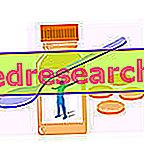Benefits
Does moderate alcohol consumption benefit?
First of all it should be pointed out that the abstemious has no negative consequences for the fact of not drinking. In fact, alcohol is a pleasure and not a necessity.
We begin this paragraph by specifying that ethanol, a powerful psychoactive and certainly carcinogenic, it is not possible to establish a minimum recommended quantity, admissible or safe.

The "Independent Scientific Committee on Drugs" classifies alcohol in first place for social dangerousness and in fourth place among all the drugs for the organic and psychological damage it determines.
On the other hand, moderate consumption of CERTAIN alcoholic beverages can offer some health benefits . Let's see which ones.
Aperitif functions of alcohol
In moderate quantities, alcohol has a beneficial effect on the digestive processes (aperitif functions), because it stimulates the appetite and increases gastric secretions, preparing the stomach to accept and digest food.
Alcohol's social function
Alcohol has a convivial meaning and facilitates socialization. Today more than ever, "the drink" replaces what was once "la mangiata", taking on a role of meeting and sharing.
The moment of greatest alcohol consumption is the evening aperitif, placed at an increasingly advanced time, which is gradually merging with dinner (aperi-dinner). This evolution is actually a regression; while increasing the time dedicated to public relations (to the detriment of the time spent in the family), it favors the excess of alcoholic beverages and the consumption of junk or unhealthy foods, high calorie and low in minerals and vitamins.
Preventive function against cardiovascular diseases
It appears that moderate consumption of certain alcoholic beverages has a protective action against cardiovascular diseases. In a well-known, but now outdated, study, it has been observed that the French, accustomed to consuming red wine at every meal, have a lower incidence of cardiovascular diseases despite a diet rather rich in fat. It was later discovered that this phenomenon is attributable only to red wine which, thanks to its content of antioxidants and especially resveratrol (a polyphenol with an antioxidant action contained in the grape skin), exerts a protective action against metabolic pathologies, l atherosclerosis and stroke.
Resveratrol is present in greater quantities in red wine, since the specific vinification technique requires prolonged fermentation in the presence of the skins (maceration). However, we must not forget that, in order to exert a protective action against cardiovascular diseases, resveratrol should be present in the drink in much higher quantities. In other words, satisfying this need with the consumption of wine at meals would require excessive portions, causing an excess of ethanol in the diet and nullifying the desired effects of the drink.
Anti-inflammatory function

How much alcohol to take
How much can you drink without suffering damage?
The acceptable dose of ethyl alcohol should not exceed 30-40 g per day for the adult man; a little less for the woman, who has less ability to metabolize alcohol (also due to the lower muscular component).
30-40 ml of alcohol are supplied by 2-3 alcoholic units *, in turn contained in each of the following "portions":
- 2-3 glasses of wine d 125 ml
- 2-3 bottles of 330 ml blonde beer
- 2-3 small glasses of 75 ml liqueur or vermuth wine
- 2-3 small glasses of distillate (ad es grappa) or 40 ml liqueur.
It should be kept in mind that, as a rule, it is better to avoid spirits, preferring wine or possibly beer. In any case, alcohol should always be taken with meals.
Parents and children themselves should know that alcohol consumption should be avoided until puberty, because the ability to metabolize ethanol is modest. Finally, it is good to abstain from alcohol even during pregnancy and lactation or in the case of pathologies and pharmacological therapies.
* The Alcoholic Unit (UA) is a quantity of ethanol equal to 10-12 g, which in milliliters equals 10-12 gx 0.79 = 7.9-9.5 ml.
Abuse
When does alcohol consumption lead to abuse?
The ways of consuming alcohol can be summarized as follows:
- LOW RISK CONSUMPTION: less than 10g of ethyl alcohol (about one AU) per day for adult women and 20g (about two AU) per day for adult men.
- CONSUMPTION AT RISK: it is that level of consumption or mode of drinking that exceeds the quantities at low risk (20-40 g per day for women and 40-60 g per day for males) and which can determine a risk in the case of persistence of such habits.
- HARMFUL CONSUMPTION: methods of consumption that cause damage to health, physically or mentally (over 40g per day for women and 60g per day for males). Unlike at risk consumption, the diagnosis of harmful consumption can only be made in the presence of damage to the health of the subject.
- ALCOHOLIDENDANCE: set of physiological, behavioral and cognitive phenomena in which the use of alcohol plays an ever greater priority for the individual than habits that previously had more important roles. The predominant feature is the continuous desire to drink. Restarting drinking after a period of abstinence is often associated with the rapid reappearance of the characteristics of the syndrome.



